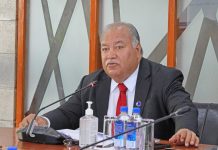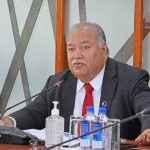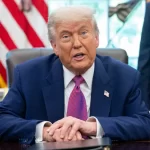By Guy C. Charlton and Xiang Gao
In May 2022, with the launch of the “Indo-Pacific Economic Framework for Prosperity,” the Biden administration sought to rebuild the U.S footprint across the Asia-Pacific region. The Framework, both rhetorically and materially, seeks to counter the growing Chinese economic and military presence across the region by re-emphasising liberal democratic values, a rule-based international order, the challenges of climate change, and economic development.
Nevertheless, the renewed U.S geostrategic interest in the region has placed smaller states and long-standing U.S allies in the uncomfortable position of having to rebalance their relationships with China and the United States in a way that entangles them in the Sino-American strategic competition and does not address their particular concerns. As Fiji’s then-Prime Minister Frank Bainimarama noted on the eve of Chinese Foreign Minister Wang Yi’s 2022 visit to the Pacific Island state, “Geopolitical point-scoring means less than little to anyone whose community is slipping beneath the rising seas.”
Moreover, it is evident that the new U.S outreach to the Asia-Pacific failed to include a robust economic and trade dimension. As newly appointed Australian Ambassador to the United States Kevin Rudd observed, American involvement in the Asia Pacific needs to have a larger economic component. “For the future, what is the missing element in U.S grand strategy?” Rudd asked. “It’s called the economy, stupid,” he continued, echoing a nugget of political wisdom from the Clinton administration in the 1990s.
Rudd further argued that current U.S trade and economic policy was detrimental to curbing Chinese influence in the region because Washington is “happy to throw some of its allies under a bus.”
Rudd was subsequently criticised for using undiplomatic language that was unbecoming for an incoming ambassador. Yet putting aside the question of Rudd’s tact, it is problematic that the current U.S strategy toward the Asia-Pacific decidedly privileges hard military power, security cooperation, and blunt trade-distorting economic tools such as tariffs and export controls. This reliance on military instruments, “managed trade,” or poorly designed trade and investment sanctions (exemplified by the Trump administration, when it unilaterally imposed tariffs on various industries, such as aluminum, without exemptions for allied states) rather than showcasing a free trade and investment policy and access to the U.S market undermines U.S objectives.
Without granting Asia-Pacific states market access and lower trade and investment barriers, the United States will be unable to provide a viable alternative to Chinese economic and investment activities in the region. It will also inhibit the exercise of U.S soft power as China continues its attempts to delegitimise the interests, presence, and actions of the United States and provide an alternative narrative of Western engagement in the Asia-Pacific as racist, colonialist, and exploitative.
Previous U.S Asia-Pacific Policy
The United States and the Asia-Pacific have had a complex history that encompasses the contradictions of capitalist exploitation, humanitarianism, racism, liberal trade, and imperialism. American clipper ships and whalers roamed the Pacific in search of whales, trade, and leisure, seeking to pry open European colonial controls on trade and influence. Chinese immigrant workers helped build the United States’ intercontinental railways before being excluded by racist state and federal legislation. Idyllic islands were commandeered by the U.S. Navy as coaling stations. Hawaiian sovereignty was overthrown and replaced by an American sugar and pineapple planter elite. Philippine soldiers, labeled rebels and terrorists in the early part of the 20th century as the United States sought to pacify the country, became American comrades-in-arms against the Japanese in 1941.
For the most part, U.S policy in the region has been pitched toward preventing hegemony that could threaten U.S territories or adversely affect trade and the growth of liberal values. Throughout the 19th century, the American “Open Door” policy played a prominent role in efforts to undermine European efforts to create exclusive spheres of influence throughout the region. At the same time, the occupation of the Pacific Coast and the underlying ethos of “Manifest Destiny,” which assumed the inevitability of the United States’ continued territorial expansion, set the stage for imperialist expansion into Samoa, Guam, Hawaii, and the Philippines.
In the United States, this westward Pacific expansion was seen as moving away from the seeming decadence and machinations of the imperialist European world, not as a re-enactment of European colonialism. Indeed, President Theodore Roosevelt noted that the American future “will be more determined by our position on the Pacific facing China than by our position on the Atlantic facing Europe.”
After World War II, the policy became enmeshed in the global Cold War and the anti-colonialism movement. The United States supported Indian and Indonesian independence but also supported the British in Malaya and the French in Indochina as they sought to re-establish colonial rule. The U.S military fought in Korea and Vietnam, and the United States established numerous military bases throughout the Pacific and Indian Oceans. The military and ideological aspects of these policies were controversial and alienated many across the Asia-Pacific, while being less than effective at achieving U.S objectives.
Moreover, in the Pacific Island states, the United States did little to deepen the goodwill engendered by World War II alliances with continued infrastructure, education, and health initiatives across the decades. This neglect was encouraged by the monopoly status of U.S power across the Pacific after the war.
Yet for all the military focus, U.S policy provided collective goods for the region and had a decidedly economic component as part of its geostrategic calculus. U.S policy sought to lower tariffs, overlooked mercantilist or protectionist practices by Asia-Pacific allies, and promoted export-led development that relied on the U.S market to encourage post-war economic growth and stability in Japan and the “Asian tigers” (South Korea, Singapore, Taiwan, and Hong Kong) while pushing a rule-based economic order through GATT and the WTO. The United States also funded organisations such as the Asian Development Bank to assist in capital formation and USAID to provide humanitarian assistance.
These efforts were premised on the notion that free markets and the accompanying economic development would lead to liberal democratic societies and the entrenchment of a liberal world order. Over the decades, Washington has provided humanitarian assistance, disaster relief, and assistance against HIV as well as assisting Pacific states in policing their fisheries.
This economic aspect was an important part of the Obama administration’s “pivot to Asia” and the negotiations that led to the 12-country Trans-Pacific Partnership Agreement (TPP). The TPP, which did not include China, was expected to contribute positively to U.S growth and would likely have enhanced U.S. influence in the region. It also was envisioned as providing a template for countering China’s increasingly dominant trade relationships across the region.
Nevertheless, then-President Donald Trump, following up on his populist notion that foreign industry had been favored by the Washington elite “at the expense of American industry,” removed the United States from the pact on his first day in office. The 11 remaining countries, after amending certain provisions of the TPP that were particularly desirable to the United States, entered into the rebranded Comprehensive and Progressive Agreement for Trans-Pacific Partnership (CPTPP). The combined economies in this agreement represent approximately 13.4 percent of the global gross domestic product.
The Biden Administration Approach
The Biden administration rolled out its economic offering to the region, the Indo-Pacific Economic Framework (IPEF), in October 2021. IPEF focuses on high labor and environmental standards, open digital data flows, free fair open trade and investment standards, and resilient supply chains. This proffered “fair and resilient trade” policy is not envisioned to be in the form of a traditional trade agreement and, importantly, does not include market access commitments. The IPEF thus provides a relatively thin gruel for those states seeking to lessen their economic dependence on China or transform the political economy of the region. These trade objectives have been coupled with additional aid initiatives, i.e., the Partners in the Blue Pacific Initiative, targeting infrastructure, health and climate change, but the monies allocated are less than the rhetoric might suggest.
The lack of sufficient funding and failure to provide a mechanism for Asia-Pacific economies to gain access to the U.S market is a major oversight. The absence of any demonstrated interest within the Biden administration about joining CPTPP, or providing market access under IPEF, simply reinforces the perception that the United States has not dispensed with the unilateralist and insular “America First” trade-distorting practices carried out by the Trump Administration, despite the change in rhetoric.
As Sandra Tarte, the head of the government and international affairs department at the University of the South Pacific in Suva, Fiji, noted in analysing U.S. policy toward the Pacific Island states, “There’s a lot of talk… And not much real substance.”
Meanwhile, China has entered into the Regional Comprehensive Economic Partnership, which includes many U.S allies and covers approximately 30 percent of the world’s population. While not as comprehensive as the CPTPP, the pact sets the stage for a China-led economic bloc in the Asia-Pacific. At the same time, China’s Belt and Road Initiative has channeled billions of dollars into development projects – for example, it is the biggest provider of investment in the Pacific Island region, which has generated significant goodwill.
The result of these developments is that the United States has done little to prevent China from becoming an even more dominant center of investment and trade. This, in turn, would give the country additional leverage over the geopolitical choices that states in the region must make.
Time to Bring U.S Economic Power Back
The United States should change course and encourage additional trade and investment throughout the region. In many countries, the United States is seen for the most part as simply a security partner; it lags behind China as the major trading and investment partner to states in the region. The Biden administration must avoid the political temptation to genuflect to the isolationist “America First” populism and the Democratic Party’s historical political base. It must reinvent its economic dynamism and connections in the region at a time when the Asia-Pacific economies are becoming more integrated with minimal U.S involvement.
While it is correct that globalization has had a negative impact on American workers in some industries, and created economic and social disruptions that have changed the American political landscape, a free trade and investment regime underpins the Western commitment to liberal democracy and economic dynamism. U.S policy has prevented Washington from significantly engaging economically in the region, and its actions directed against China have had significant collateral damage to its traditional allies and potential security partners.
Without an economic component, it will be difficult for the United States to compete with China to offer an alternative liberal, rule-based model of economic development and shape Beijing’s behaviour in a way that would socialise it more into the international community. First and foremost, the United States should join CPTPP. This would fundamentally alter the geostrategic environment and individual state decision-making throughout the region. It would also provide economic benefits to American workers and businesses, that have been shut out of markets.
SOURCE: THE DIPLOMAT/PACNEWS


















